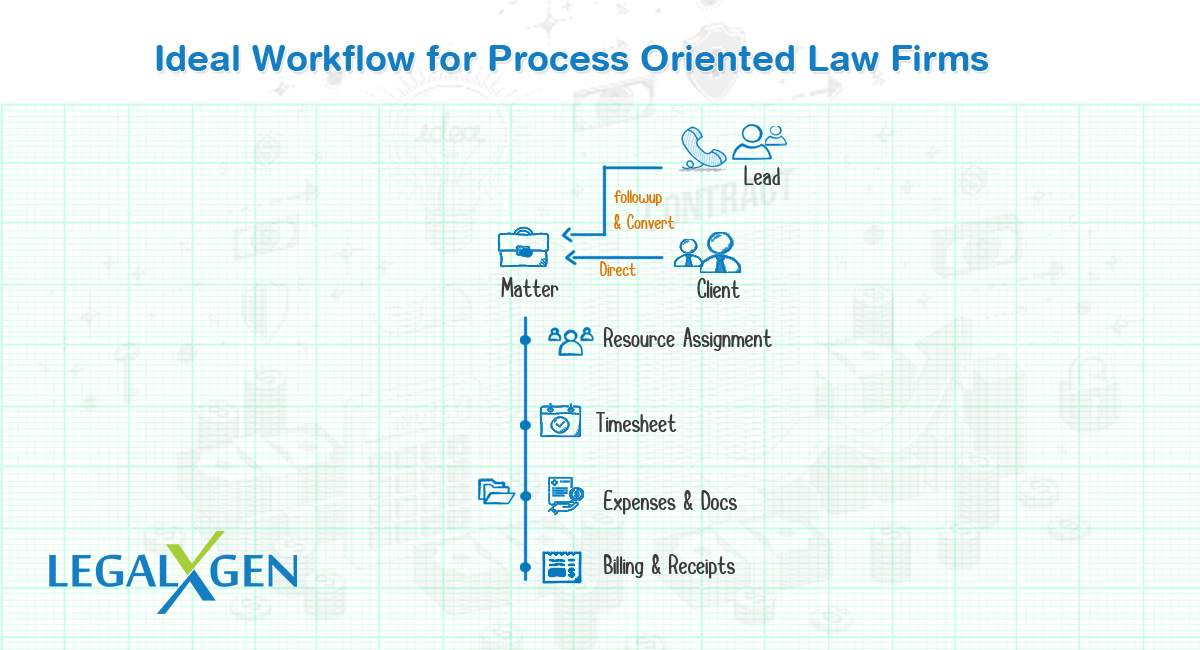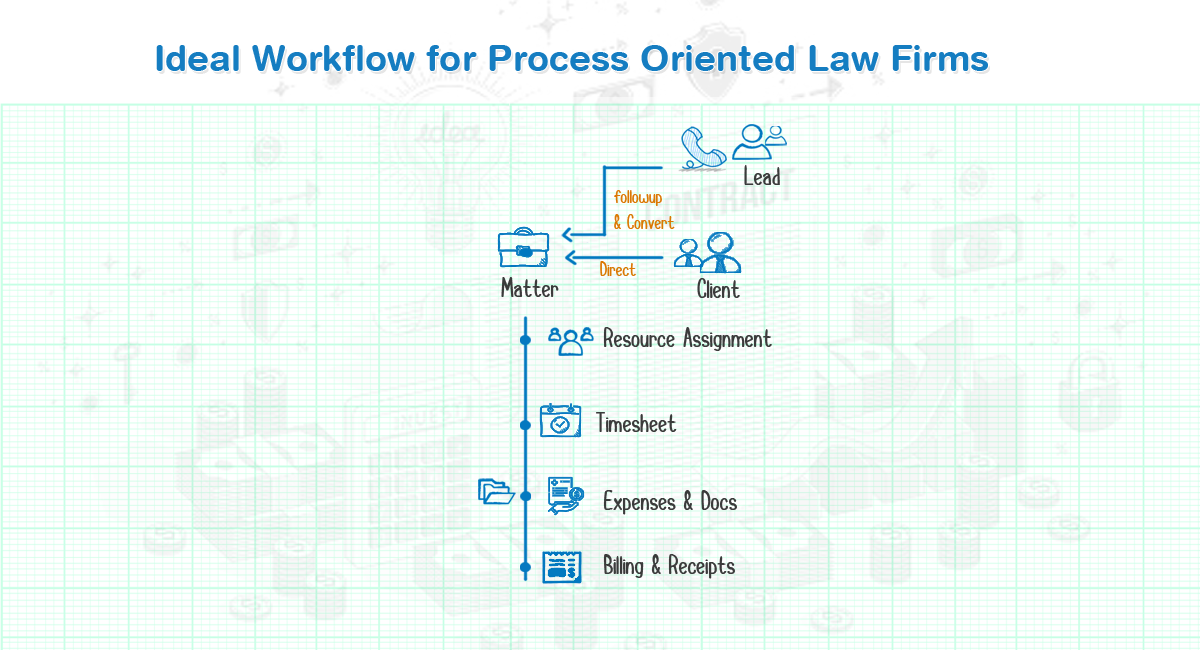

To understand the importance of the process let me ask a few questions about your law firm:
- How many new matters did you open in Feb 2021?
- What is the value of invoices you created and the and receipts in the month of Jan 2021?
- What is the total number of billable hours entered by the lawyers in the firm?
If you cannot get the answer to the above questions within 5 minutes, it simply means a Lack of Processes and Maximum Probability of Revenue Leakage.
With this I’m sure, I’m able to make you realize, what it means by Process? And why it’s important for the growth of your law firm?
If you can’t describe what you are doing as a process, you don’t know what you’re doing.
W. Edwards Deming
We at Legalxgen help law firms to streamline their processes. For us, the definition of process is pretty simple “Maximize the Productivity & Growth and Minimize the Revenue Leakage” that’s it and we’ve been successful to achieve it for our clients.
So, without much wasting the time we would like to share what should be the ideal process at your law firm to ensure Productivity and Growth.
- Leads/ Enquiries
- Mostly enquiry is the first step of any business engagement. Which’s called a lead.
- Ensure you keep the track of every enquiry either it’s coming directly or through your website.
- Make sure you respond immediately and do follow-ups to make this new prospect comfortable.
- The ideal is to share the firm profile which outlines your competencies and skills.
- Client
- Maintain client’s information neatly. Basic information could be Name, Type of Business, and Belonging Industry etc.
- It’s advisable to have the Contact Persons Details (Name, Designation, and Email etc,.)
- Correct Address
- Tax Information, such as PAN, TAN etc.
- Matter
- Make sure that matter is created for every client engagement.
- Client: For each matter, you should know and maintain it clearly that to which client it belongs to.
- Matter Code: You may assign a unique matter code for each engagement or assignment. Example: 2021/IBM/001
- Matter Title & Description: These are the deliverables to your client.
- Currency: It’s the billing currency in which you’re supposed to raise your bills. E.g., INR/ USG/ GBP etc.
- Billing Type: It’s the way to calculate your charges. Example: Fixed Fee, Hourly Rate, Milestone Based fee or Retainership Model
- Practice Area: It’s the high-level nature of work e.g., Corporate, Litigation, Intellectual Property
- Resources: Considering the nature of engagement/ matter assign the right resources on the matter.
- Engagement Letter: It’s always advisable to share a formal document with your client which includes matter information in terms of Deliverables, Timelines, Contact Points and Billing.
- Timesheet & Billing
- Time Recording: Ensure team is recording their time on the matter.
- Expense Recording: Ensure any kind of expense incurred is recorded along with a copy of the bill.
- Fix a billing date.
- Invoice Creation: Make sure while creating the invoice you’re considering all unbilled timesheets and expenses. To maintain complete transparency, it’s advisable to attach the detailed timesheet and expenses along with the invoice. Mention the due date for each invoice.
- Mark your timesheet if it’s billed or not.
- Do the follow-up once the invoice is not paid within the due date.
- Manage your Documents & Deliverables.
- Share the documents/ deliverables with your clients.
- Store the documents in matter centric manner. Most of the time these deliverables are not stored properly and lying into n number of machines belonging to the individual lawyers and hence when it’s needed after some time it’s hard to retrieve.
These seems simple and obvious things but believe me, once you implement these at your law firm it turns into magical results.

Ashish has 15+ years of experience in Enterprise Applications.
A Technology, Process & Productivity Expert for the law firms from last one decade.
 English
English French
French German
German